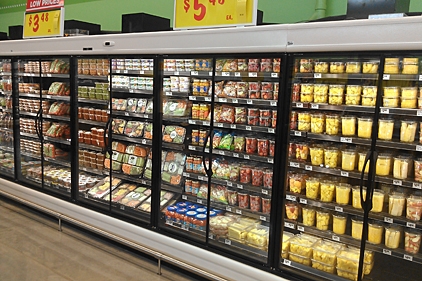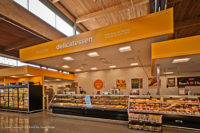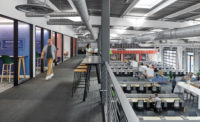H.E. Butt Grocery Co., San Antonio, Texas, opened a new 83,000-square-foot store as part of the redevelopment of the old Austin, Texas, airport site. This entire  redevelopment project focuses on sustainability and energy efficiency from the retail stores to the family housing units.
redevelopment project focuses on sustainability and energy efficiency from the retail stores to the family housing units.
“It is just the way we operate our business,” says Bill Triplett, vice president of planning, design and construction. “Our vision is to move faster, save energy and be sustainable. HC [or hydrocarbon] refrigerants have my attention, and I want to move H-E-B in a different direction away from CFCs [chlorofluorocarbon].”
From the start, H-E-B had four requirements from the refrigeration design—energy efficiency, simplicity (design and install), sustainability and reliability.
“Our ultimate goal with this project is a 70% energy reduction from all the store systems,” says Charlie Wernette, director of engineering. “We believe that a R290 hydrocarbon (propane) system will achieve approximately 50% energy reduction compared to our typical store refrigeration load. Based on the tests and analysis we have conducted to date, we believe that the actual sustainability and energy reductions will far exceed any measurement used today by LEED and GreenChill. In addition, we wanted to find another natural refrigerant alternative as we are not convinced that CO2 is the long-term solution for H-E-B.”
“It is very important to H-E-B that our natural refrigerant solution meets our sustainability and lower GWP objectives, but we also want a simple design that is easy to install, similar to your home refrigerator where it is delivered, plugged in and works for 15-20 years without having to think about it,” he adds. “We think this system achieves our energy and sustainability objectives. In addition, we believe that because of the design, we may realize other cost saving benefits such as collapsed construction cycle time resulting in our ability to get new stores on board more quickly than ever before.”
H-E-B and Hussmann, the Bridgeton, Mo.-based manufacturer of energy-efficient refrigeration systems, began working together in October 2011 to identify the design criteria and specifications to use propane for a majority of the refrigerated display cases in the store.
“When H-E-B approached Hussmann about wanting to use propane for the Austin Mueller store, we were very excited about working with them in the development, design and installation of this alternate refrigerant source for their store,” says Phil Evans, senior vice president of engineering for Hussmann. “Keeping in mind H-E-B’s four requirements, we have designed and engineered a propane system that will enable them to achieve their energy reduction goals while maintaining a safe, shopper-friendly environment. We look forward to getting the store operational, so that we can closely monitor the performance and evaluate our proof of concept with this first store.”
Hussmann worked closely with H-E-B and several U.S. government and safety agencies in developing the regulations and approval processes to enable the safe use of propane in a supermarket application, according to Norm Street, Hussmann’s director of new technology development. This included optimizing equipment designs based on EPA limitations of 150 grams per system.
“Hussmann’s unique and innovative methods secured timely design validation, risk assessment and approvals that met or exceeded H-E-B’s expectations. In view of the fact that we were using propane, safety was always our top priority—from the store personnel to the customers in the store, as well as the perishables in the refrigerated display merchandisers.”



